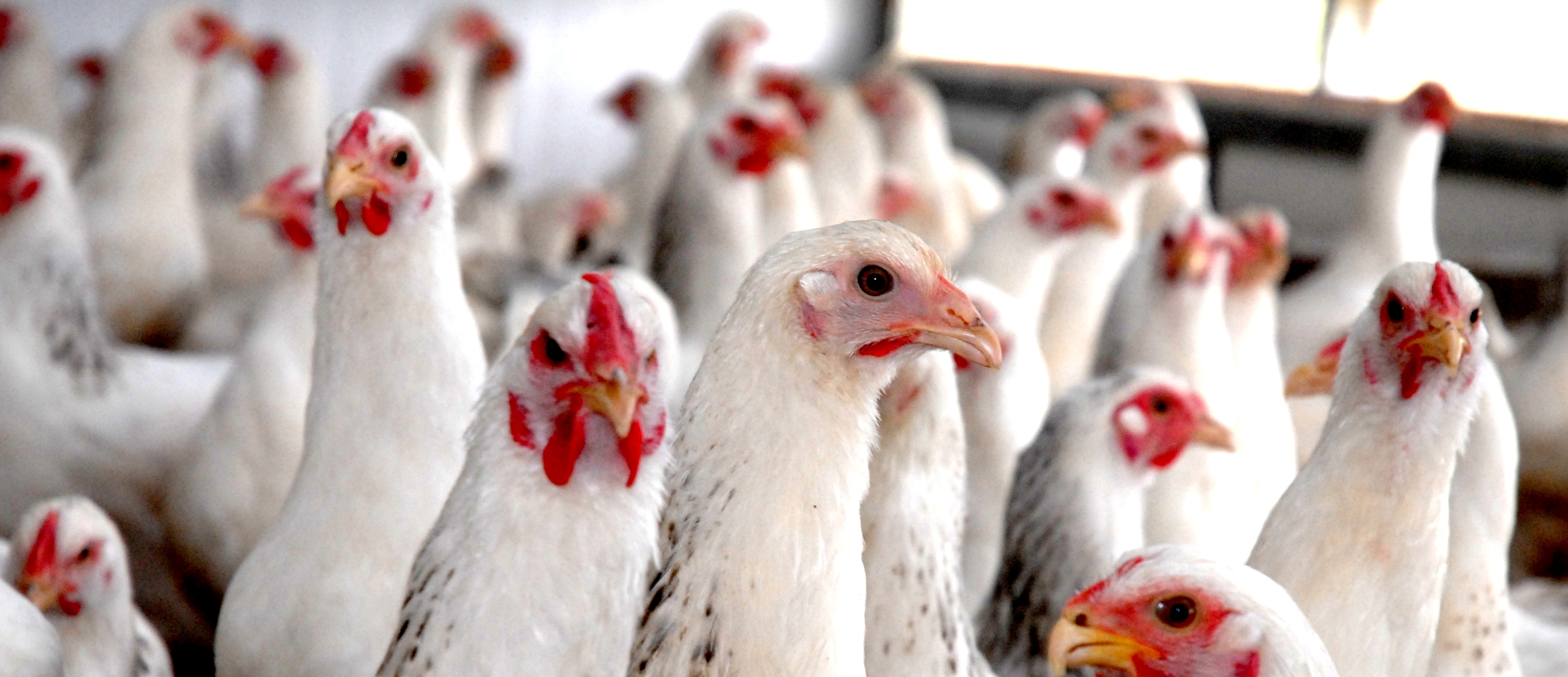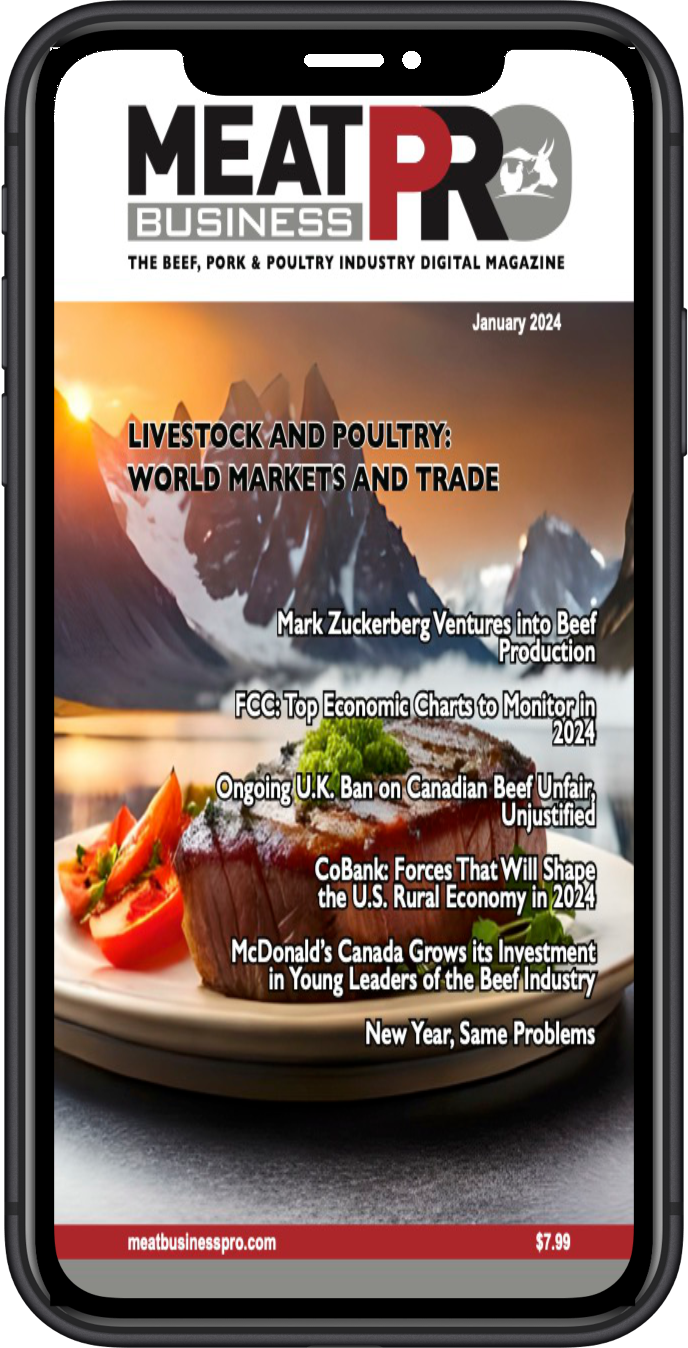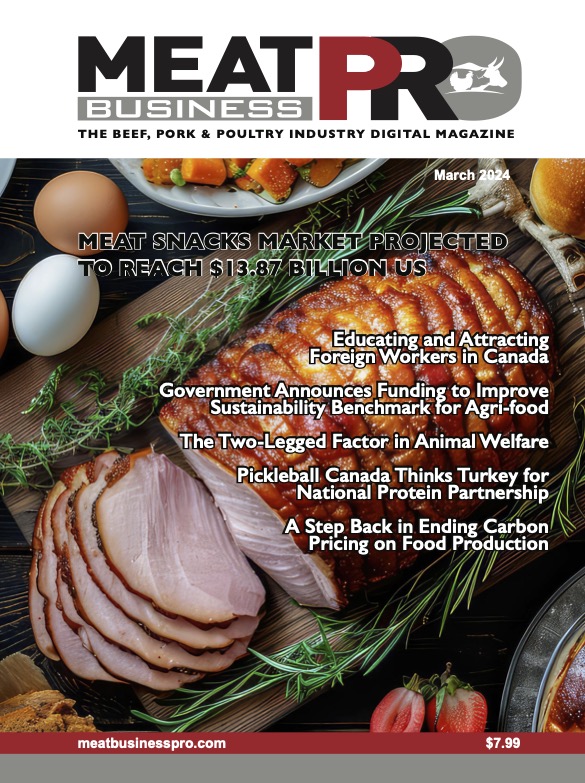Chicken Demand Should Keep Broiler Sector Happy for 2019

Growth in Canadian broiler production slowed in the first five months of 2019, falling under the 3% pace we’d anticipated in our January outlook. Even with the farm price increasing at a slightly faster pace than input costs, broiler operations recorded positive profitability. We expect positive profit margins for the remainder of 2019 along with stronger growth in broiler production
by J.P. Gervais – Farm Credit Canada (FCC)
Broiler production (measured in eviscerated weight) climbed 1.6% year-over-year (YoY) in the first 5 months of 2019. Canadian stocks of frozen chicken meat averaged 54,000 tonnes over the first five months of 2019, representing a 14.2% YoY increase. Despite such high stocks, broiler quota allocation will continue to grow to meet anticipated strength in consumption.
Chicken remained competitively priced at the retail level between January and April. Despite a retail price increase of 2.5% YoY in May, competing animal protein retail prices climbed on average at similar rates: 1.4% for pork and 2.5% for beef. During this period, Canadian overall food prices climbed 3.5% YoY, higher than overall inflation at 2.4%.
“Interest rates and the value of the Canadian dollar have had an impact on the profitability of Canadian broiler producers in the first half of 2019”
Trends for broiler operations to watch
Strength in retail demand for chicken High chicken meat inventories Rising feed costs African Swine Fever in China and the balance in global demand and supply of meat Expansion in plant-based protein consumption Higher interest expenses despite no change in the Bank of Canada policy rate
Broiler production (measured in eviscerated weight) climbed 1.6% year-over-year (YoY) in the first 5 months of 2019. Canadian stocks of frozen chicken meat averaged 54,000 tonnes over the first five months of 2019, representing a 14.2% YoY increase. Despite such high stocks, broiler quota allocation will continue to grow to meet anticipated strength in consumption.
Chicken remained competitively priced at the retail level between January and April. Despite a retail price increase of 2.5% YoY in May, competing animal protein retail prices climbed on average at similar rates: 1.4% for pork and 2.5% for beef. During this period, Canadian overall food prices climbed 3.5% YoY, higher than overall inflation at 2.4%.
Disposable income is also a major driver of animal protein consumption. Canada’s unemployment rate fell to 5.4% in May 2019 (the lowest level since 1976) and average hourly earnings grew at a 2.8% annual pace. One potential downside to monitor: plant-based proteins represent an increasing risk to continued growth in retail demand for chicken.
We estimate that feed costs declined 1.8% YoY in the first six months while chick costs rose 0.8% YoY. Energy and interest expenses also climbed. The average farm price climbed on average 4.5% YoY in the first four months of 2019, pushing cash receipts 5.8% higher in the first quarter of 2019 relative to 2018 Q1.
Feed costs are projected higher for the second half of 2019. Unfavourable seeding conditions in the U.S. have lowered 2019 seeded acres and corn yields. The USDA projects an average 2019-20 corn price of US$3.80, higher than the 2018-19 average of US$3.60. Futures markets are currently signaling that this price projection is too low. Dry conditions in Prairie provinces and an excessively wet Eastern Canada could also lower the available supply/quality of feed. Projections are for feed costs to climb 7.3% YoY in the second half of 2019. Chick costs are expected to climb at the relatively slower pace of 2.2%.
The spread of African Swine Fever (ASF) through the Chinese hog herd will cause significant disruption in the global animal protein market. China’s meat consumption represents 27% of global meat consumption, around 60% of which is pork. The USDA expects China to import a record amount of pork (+41% YoY), beef (+15% YoY) and chicken (+68% YoY) this year. These projections are based on a 10% projected decline in Chinese 2019 pork production.
ASF may have an even larger impact. Some credible estimates suggest a possible, and staggering, 35% decline in 2019 Chinese pork production. Because major producers in North America and Europe can’t scale up production to meet this anticipated growth in import demand from China, animal protein prices at the farm and retail levels will need to jump significantly to re-establish a balance between anticipated global supply and demand.
Early 2019 slowdown pauses rate hikes – loonie hovers at US$0.75
Interest rates and the value of the Canadian dollar have had an impact on the profitability of Canadian broiler producers in the first half of 2019.The Canadian economy recorded a 0.4% increase in real GDP in the first quarter of 2019, following a 2018 fourth-quarter 0.3% increase. The Bank of Canada (BoC) expects the pace of economic growth to pick up in the second half of 2019, with inflation expected to trend around the bank’s 2% mid-point target.
A slower pace for economic growth has significantly changed the January outlook for interest rates. We don’t expect the BoC to lift its policy interest rate for the remainder of 2019, yet financial markets believe a rate cut is possible. Recent investments and the five previous increases in the BoC policy rate (dating back to July 2017) are expected to continue pushing interest expenses of broiler operations higher.
Our January forecast of a US$0.75 loonie was right on the money up to mid-June. The future path of interest rates in Canada and the U.S. as well as the strength of the oil market matter for the exchange rate outlook.
The U.S. economy has shown some strength with a 3.2% increase in real GDP for the first quarter of 2019, in line with the 2018 economic performance. But in March the U.S. Fed chairman slashed the forecast for 2019 rate hikes from two to zero. And the most recent statement of the U.S. Fed now suggests at least one rate cut before the end of the year. Lower U.S. rates could lift the loonie up slightly.
Conversely, potentially lower oil prices weaken the outlook for the loonie. Supply disruptions and production controls resulted in the West Texas Intermediate (WTI) crude oil price averaging US$57. The Canadian oil price benchmark also rebounded following production cuts in Alberta earlier this year. Yet, world economic growth has slowed (in line with early 2019 expectations) due to trade tensions, weakening global oil demand.
FCC Ag Economics forecasts the CAD to trend around US$0.745 for the remainder of 2019. A low loonie implies a slightly higher price for feed.
J.P. Gervais is Vice-President and Chief Agricultural Economist at Farm Credit Canada (FCC)











